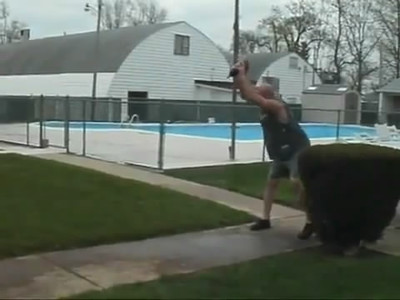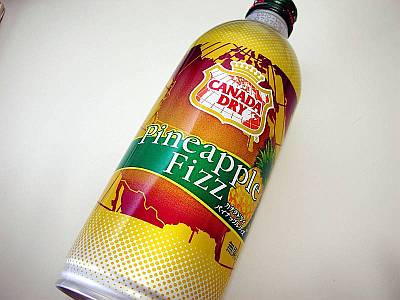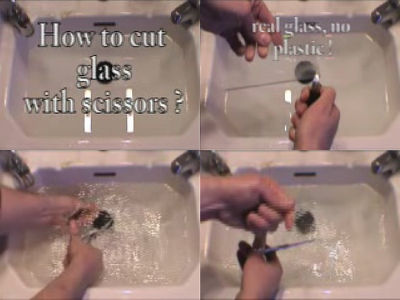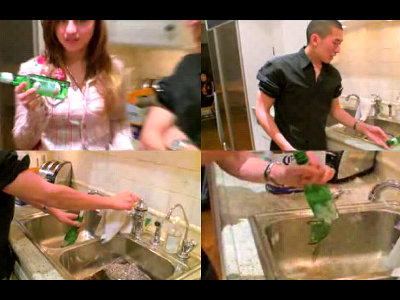`` Scientific technique that does not blow out when flipping can carbonated drink with fingers '' is scientifically denied

by
There is a myth that `` even if you shake a carbonated drink can, foam does not squirt if you tap the side lightly with your finger '', from Danish researchers shaking 1,000 cans of beer, 'It is meaningless to hit the side of the can'.
To beer or not to beer: does tapping beer cans prevent beer loss? A randomized controlled trial.
(PDF file) https://arxiv.org/ftp/arxiv/papers/1912/1912.01999.pdf
Attention! Very important s cience: Tapping a can of fizzy beer does ... absolutely nothing • The Register
https://www.theregister.co.uk/2019/12/13/science_solves_shaken_beer_conundrum/
Carbon dioxide is dissolved in beer and carbonated drinks, and the resulting carbonic acid forms bubbles when opened, creating bubbles and pungent throats that appear when poured into glasses. However, if strong vibrations are applied to the can or plastic bottle containing the carbonated beverage before opening, the carbonic acid becomes bubbles in the can and causes the contents to blow out due to the pressure difference at the time of opening. At this time, the bubbles generated in the can are considered to adhere to the side of the can, so `` tap the side of the can lightly to move the bubbles to the liquid surface and prevent the contents from being blown out simultaneously with the contents when opening '' The trick was devised.
The following is an illustration of the mechanism of the trick 'slap the side of the can'. In the case of 'do not do tricks' above, the foam attached to the side of the can is gushing out at the same time as the contents, but in the case of 'doing tricks' below, since the foam has moved to the top of the can, Even when the can is opened, only bubbles are blowing out.
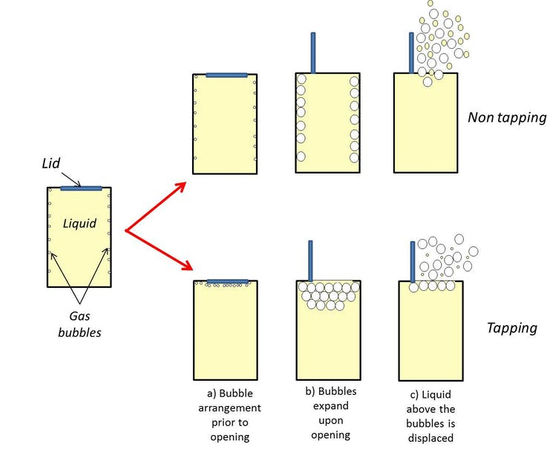
by
However, since this trick was never scientifically verified, a research group such as Elizabeta Sopina who is studying health economics at the University of Southern Denmark conducted an experiment to actually shake canned beer I decided to look. The research group first procured 1,000 cans of 330 ml cans, courtesy of the Danish beer maker Carlsberg , and said, 'I did not shake, I did not beat,' 'I did not shake, I beat,' 'I shook, I gave Classified into 4 groups: 'Not hit', 'Wave and hit'. After shaking the beer can for 2 minutes, the side of the tapping can was hit with one finger three times in total. The beer spouted from the cans at the time of opening was absorbed by towel paper, and the weight of the cans before and after opening was compared to calculate the amount of loss in the contents of each group.
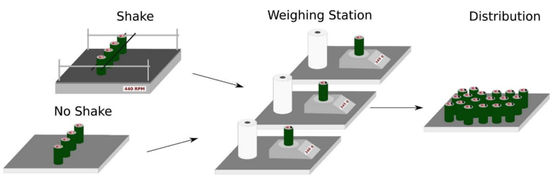
The figure below shows the beer loss in each group from left to right, not waving / flicking, not waving / flicking, waving / flicking, and waving / flicking. This is a graph showing the amount. You can see that there is almost no difference between the results of the 'shake / hit' group on the left of the red frame and the 'shake / hit' group that performed the trick.
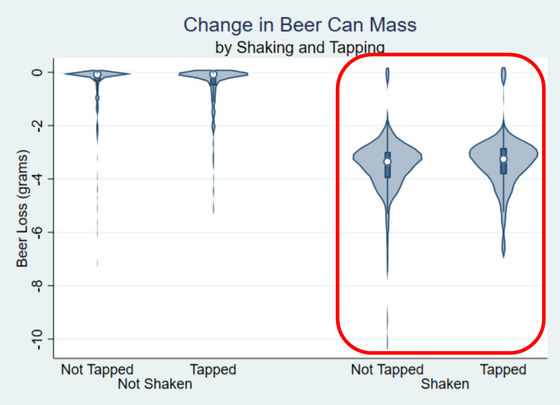
The study group stated that 'there was no statistically significant difference between the groups that struck the cans and did not strike. The only solution to prevent the spouting of canned beer is to wait for the foam to settle. ' In addition, a part of the 1000 cans of beer used for the experiment was consumed by researchers, and the rest was acted by university students who 'throat dry at the end of hot Friday'.
Related Posts:

